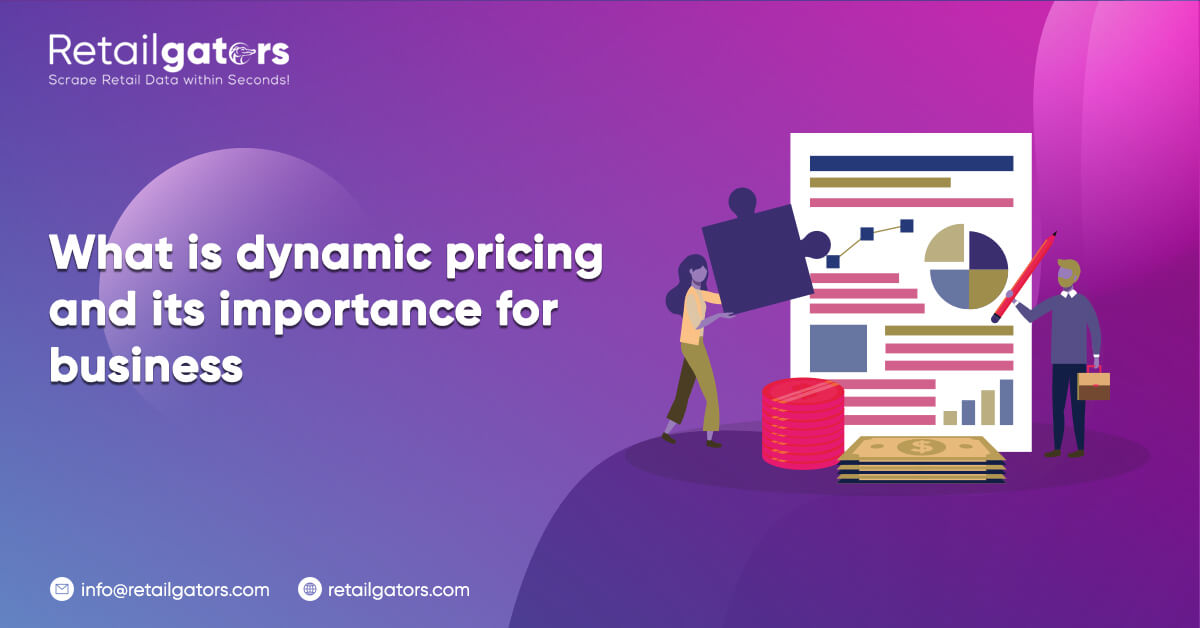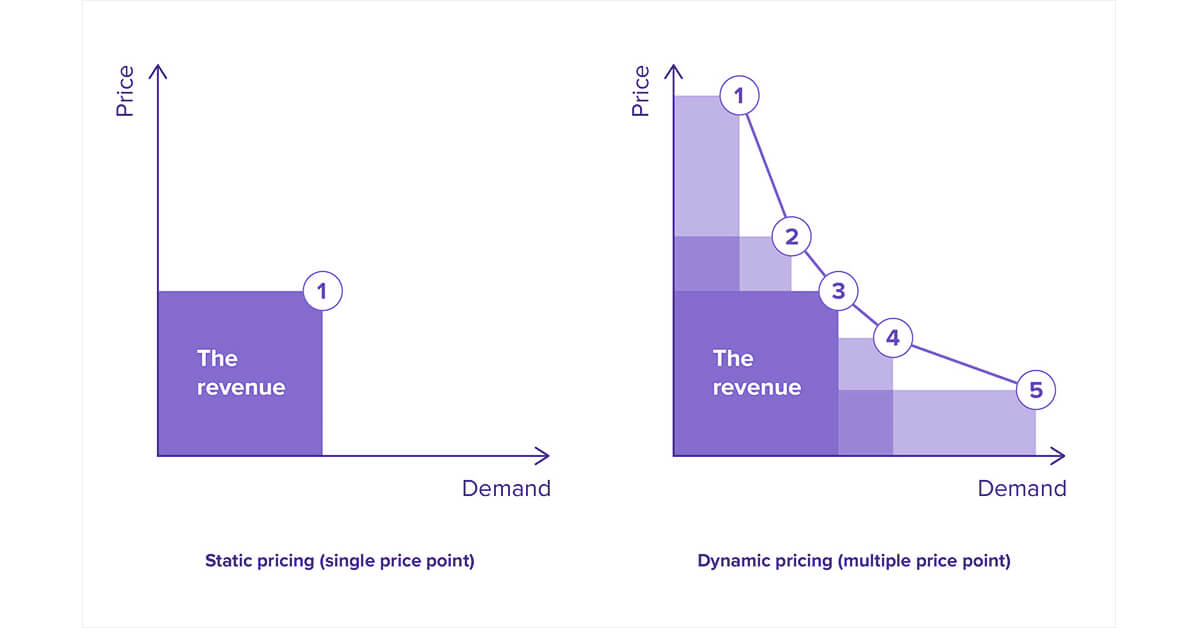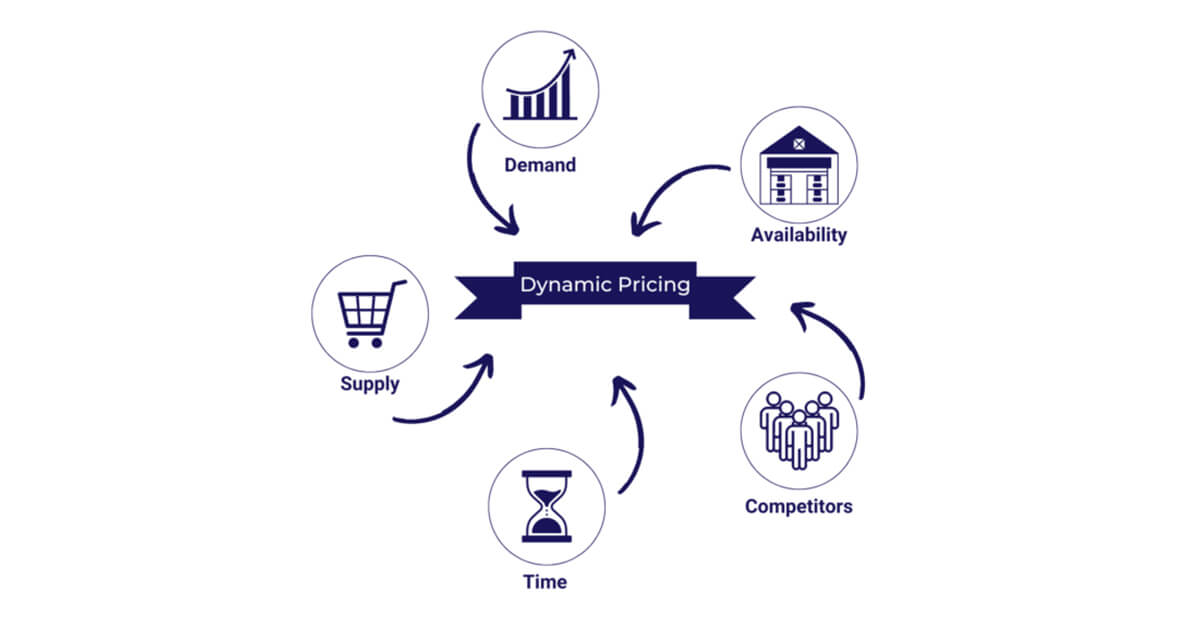
Dynamic pricing is a strategy that adjusts prices based on demand. Businesses lower prices during low sales periods and raise them when demand is high. It encourages customers to buy from businesses with lower inventory costs in the short term. Dynamic pricing helps companies maintain a consistent price point. It maximizes profits and fosters customer loyalty by reducing operating costs. It is a crucial practice for business success in the modern era.
Dynamic pricing strategies have increased revenue by 20% to 40%. In this article, we will explore the key benefits of dynamic pricing. This article will discuss dynamic pricing and optimize your pricing strategy.
What is dynamic pricing, and why is it essential for businesses?

In the mid-20th century, economists introduced the concept of the demand curve. They argued that the quantity of a suitable demand is linked to its price—a fundamental principle taught in economics. This theory was primarily used to assess how supply and demand influence the price of a particular product and its impact on the market.
People expect to pay a higher price when they purchase a sought-after product. However, we have learned over time that supply and demand influence prices differently than expected. While a decrease in orders due to low sales can make it challenging for retailers to sell their inventory, what if an inferior product did not cause the drop? What if it was due to price reductions? And what if this happened frequently?
This pricing strategy is known as "dynamic pricing." It involves periodically adjusting the prices of products or services.
The Benefits of Dynamic Pricing
The capability to change prices dynamically can lead to more significant gains. However, only a few businesses are changing their prices frequently enough to benefit from dynamic pricing.
The capability to change prices dynamically can lead to more significant gains. However, only a few businesses are changing their prices frequently enough to benefit from dynamic pricing.
When demand is high, there is a tendency for businesses to raise prices because they need to increase profits. If they do not do so, they might lose customers or incur operational losses.
When supply and demand interact with each other—when supply increases while demand increases more than anticipated—the business benefits the most from dynamic pricing. Sales growth and profits may increase when this occurs for several consecutive months or years.
1. Increase Profits.
If dynamic pricing is applied, it can increase profits by selling at a lower or higher price. It will help businesses reduce operating costs and increase net profits, which may be invested in the industry or used to provide better customer products.
2. Reduce Operating Costs.
Dynamic pricing can reduce operating costs. For example, a business selling low-cost products can maintain a lower price of goods sold. In addition to reducing costs, it will allow the company to grow faster.
3. Increase Revenue and Value.
Dynamic pricing can increase revenue by enabling businesses to maintain a specific price point and provide customers with better value for their money. Dynamic pricing allows powerful influence over short-term profits. Consumers are more likely to pay higher prices when it is profitable for businesses and when they are loyal and benefit from loyalty programs or discounts offered in return for repeat purchases.
4. Improve Profitability and Cash Flow.
Dynamic pricing enables retailers to maintain their profitability. It responds to market fluctuations by changing prices based on supply and demand. It helps companies avoid losses or minimizes any potential losses. Dynamic pricing helps improve cash flow as all sales are final instead of offering fixed-price options with returns or refunds when items sell out.
5. Achieve Better Customer Service and Satisfaction.
Through dynamic pricing, businesses can improve customer service, which increases customer loyalty, loyalty programs, and repeat purchases. Companies can change prices using various methods, including electronic signage, catalogs, mobile apps, and websites like Amazon so that customers can access the prices available anytime.
How Dynamic Pricing Works?

There are several ways to implement dynamic pricing. It is a systematic approach that involves specific predefined steps. For example, a retailer may offer coupons every time prices are adjusted. Customers can use these coupons at checkout to obtain special discounts or to receive free goods. It reduces their shopping cart and lowers the price paid. Moreover, customers who use coupons while shopping will have the same feeling of loyalty toward the business and will purchase more products in the future.
An excellent dynamic pricing program works well with automatic—predetermined steps with clear benefits for customers, employees, and business owners. The result is a trade-off that includes certain drawbacks.
For example, price increases can make it more difficult for customers to obtain the desired products. It can result in lower customer satisfaction, bad word-of-mouth marketing, and a lower profit margin. In addition, there will be fewer sales; this means higher manufacturing costs and added expenses associated with advertising and marketing. Customers may need more than the new price point, making them less likely to purchase products or services from the business.
There are various benefits of dynamic pricing in busy retail stores. Sales increase—or decrease—can be implemented without influencing employees' focus or concentration.
Some retailers change their prices based on competition, online pricing, and supply and demand. Wise businesses that effectively apply dynamic pricing can achieve greater profits than competitors. Thus, dynamic pricing is becoming more prevalent in the retail market.
Dynamic Pricing and Online Sales
In the last few years, e-commerce has transformed how goods are sold. Customers can shop 24/7 from anywhere, which allows them to compare products and prices at their convenience.
They are less sensitive to price changes; they might even shop around for better deals from various stores or websites. These factors make it harder for retailers to set prices manually or adjust them frequently. Therefore, retailers must use dynamic pricing to make their goods more competitive.
Dynamic Pricing and Customer Loyalty Programs
Loyalty programs are an excellent tool for keeping customers coming back. It is essential because the revenue generated through this channel represents a considerable percentage of total sales. Loyalty programs can be one of the most effective ways businesses can increase sales.
In addition, customers who receive rewards or discounts by using loyalty programs are likely to purchase more products or services in the future because they will appreciate being loyal customers. It can help businesses increase profits, as well as improve customer satisfaction.
Consumers loyal to one business (or brand) tend to be more faithful to all companies in the same sector. Therefore, loyalty programs can help businesses improve their reputation and increase brand awareness.
Conclusion:
Dynamic pricing can be essential for many businesses and online retailers. It helps them adjust their prices to meet fluctuating market conditions and maximize revenue. It's critical to address it before implementing such a policy.
Dynamic Pricing is becoming more and more prominent in the retail market. These strategies can improve the business’s profitability and increase sales volume and reputation among loyal customers.








Leave a Reply
Your email address will not be published. Required fields are marked